Russia tried to freeze Ukraine. Here’s how it survived the winter.
Air defences downed many missiles targeting power plants. When they were hit, crews scrounged spare parts and fixed them, and coffee bars and cafes were open less than an hour later.
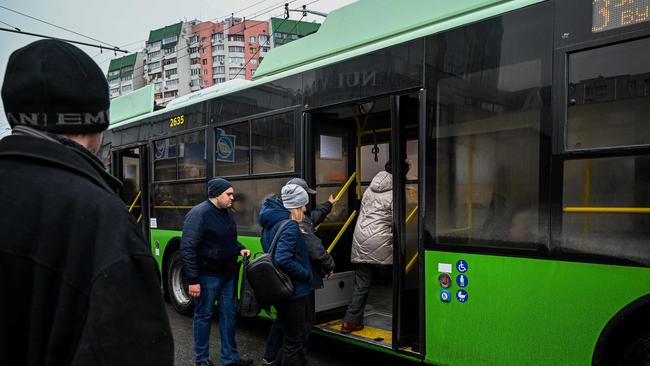
Before dawn on March 9, a Russian Kinzhal hypersonic missile smashed into a power station. The explosion woke people across the capital city as black smoke rose above the sky.
The night of missile and drone strikes across Ukraine was the latest massive salvo in Russia’s campaign to destroy Ukraine’s electricity, heating, communications and water infrastructure, thereby rendering its cities uninhabitable and forcing capitulation to the invasion.
But by 8:30am, less than an hour after a follow-up barrage of cruise missiles that air defences largely intercepted, Kyiv’s streets were busy with people going to work. Coffee bars opened to serve croissants and cappuccinos. Most of Ukraine still had power. Local disruptions were fixed quickly.
Temperatures now are warming, days are getting longer and demand for heating and lighting is falling. Ukraine has stopped the rolling blackouts it adopted to save electricity when strikes began pommeling the power infrastructure. The Russian attempt to engineer a humanitarian crisis has failed.
Instead, Russia’s expenditure of most of its precision-guided missiles brought about a strengthening of Ukraine’s air defences. Today, U.S. and European governments, outraged by the attacks on civilian infrastructure, are sending Ukraine sophisticated antimissile systems denied before, such as Patriot and SAMP-T batteries — with training of Ukrainian operators nearing completion — along with generators and spare parts for the energy grid.
“The Russians had expected us to have internal strife, destabilisation and the outflow of additional refugees,” said Oleksiy Danilov, the national security adviser to President Volodymyr Zelensky. “They didn’t get what they expected. Our country, thanks to our partners, has survived this difficult period.”
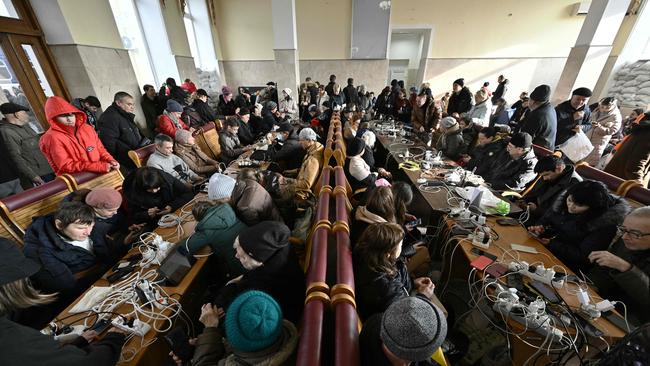
There were touch-and-go moments, such as when strikes on Nov. 23 forced the emergency shutdown of all of Ukraine’s nuclear-power stations, causing a days-long blackout and knocking out mobile-phone service. The winter, for many, was indeed cold and dark. Dozens of civilians died when Russian missiles hit residential buildings. Several energy workers were killed, and many wounded.
Ukraine now is in a race for time. It’s trying to repair and harden its grid while bolstering air defence capabilities faster than Moscow rebuilds its stock of missiles and drones.
“Their attacks will continue, but as far as this winter is concerned, they lost,” said Volodymyr Kudrytskyi, chief executive of state power company Ukrenergo. “Winter is over and we’re still here.”
Russia says that its missile stocks won’t be exhausted and that it will keep hitting targets in Ukraine until it achieves the objectives of its “special military operation.”
Ukrainian authorities knew all along that their energy infrastructure was vulnerable, and with it the water-pumping, sewage, heating and communications systems that all run on central power and are indispensable for urban life. Some 70% of Ukrainians live in cities.
Ukraine disconnected its electricity grid from Russia’s just hours before the invasion on Feb. 24, 2022. Within weeks, Ukraine had hooked up the grid to the European Union’s, a connection with limited capacity but that proved a vital backup.
Ukraine’s electricity grid is a single nationwide network based on four large nuclear-power stations alongside coal and other energy sources. High-voltage lines carry power hundreds of miles to substations near far-flung population centres.
The energy system had a major strength inherited from Soviet times, say energy officials: Capacity was far higher than needed. Ukraine once housed a large part of the Soviet Union’s industrial base. As a result, all parts of the grid had backups built in, and every city could receive electricity by various routes.
At first, Russia didn’t systematically bomb the energy infrastructure, believing it would soon belong to Moscow, because of an expected quick Ukrainian surrender. Nine days into the war, Russian forces captured intact the Zaporizhzhia nuclear-power plant, Europe’s biggest, whose six reactors used to generate a fifth of Ukraine’s electricity.
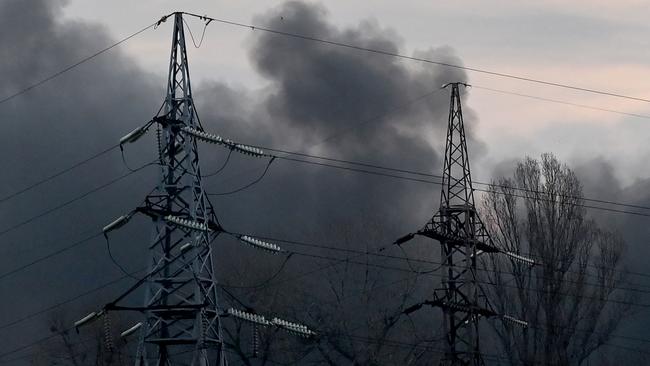
Russian missile strikes targeted military objectives such as bases at first, then sought but failed to disrupt rail traffic, and then induced a brief fuel crisis by destroying the main oil refineries.
In September, as Ukraine launched successful offensives in the Kharkiv and Kherson regions, rolling back Russian gains, Kyiv was living a near-normal life. Ukraine’s economy was stabilising and even starting to recover.
Maryna Kovalchuk, manager of the Pesto Café chain of restaurants, remembers it as a time of hope. Schools were reopening, mothers and children who had fled were returning from abroad and families were going out again. “We had some revenue. I thought: We can breathe now,” she said.
Russia launched its first heavy barrage against energy infrastructure on Sept. 11, plunging the cities of Kharkiv and Dnipro into blackouts, just as Russian troops were fleeing in disarray from occupied parts of the Kharkiv region. Russia also bombed a dam in the city of Krivyi Rih, flooding large urban areas.
As human-rights organisations called such targeting a war crime, Russian nationalist commentators exulted over it, saying the gloves were finally off. “Electricity is not a right but a privilege,” Russian writer German Sadulayev wrote in a social-media post that went viral on Telegram.
Mr. Zelensky gave a speech to prepare Ukraine for a winter of suffering. Addressing Russian President Vladimir Putin’s claim that Russians and Ukrainians are one people, he said: “Cold, hunger, darkness and thirst are not as dangerous and deadly for us as your ‘friendship and brotherhood.’”
His team had held a simulation of the coming battle, to analyse whether Ukraine’s energy system could outlast Russia’s missile stockpile, said Rostyslav Shurma, an economic adviser to Mr. Zelensky. Officials thought the advantage lay with Ukraine — on paper.
But some categories of vital equipment were in short supply, especially the large transformers used at substations. This Soviet-standard machinery isn’t usually manufactured in the West, and is hard to replace.
On Oct. 10, Russia launched a far heavier barrage of 70 missiles and scores of drones, hitting about 30% of Ukraine’s energy infrastructure.
The attack was ostensibly in retaliation for the bombing of the bridge linking occupied Crimea with the Russian mainland. In fact, it had been planned well before the bridge strike, say Ukrainian and Western officials. According to Ukrainian officials, senior members of the government of former Ukrainian President Viktor Yanukovych, who fled to Russia after Ukraine’s 2014 revolution, helped plan the attacks, using their intimate knowledge of the infrastructure.
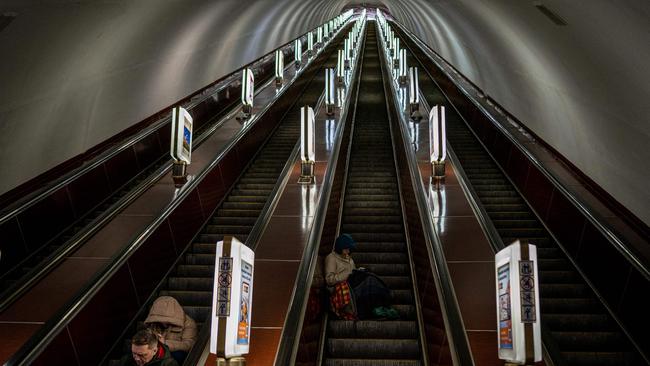
Iranian-supplied Shahed suicide drones swarmed the skies of Kyiv as they headed toward a power station in a densely populated part of the city centre. Ukrainian soldiers and police tried to down the drones by shooting chaotically with their Kalashnikov rifles. A missile hit a busy intersection just outside Kyiv’s main university in the middle of rush hour, killing six people.
More attacks followed every few days during the fall. Hosts on Russian state TV discussed how the collapse of vital services would cause outbreaks of infectious diseases that would ravage Kyiv. Moscow’s newly appointed war commander, Gen. Sergey Surovikin, was celebrated in Russian media as the author of the missile campaign and dubbed “General Armageddon.”
“The environment in Ukrainian cities will leave no chances for survival. There will be a lack of communications, infrastructure, heat, power and food,” Sergei Markov, a former Putin adviser who runs the Institute for Political Studies in Moscow, told a Moscow newspaper in November.
While propagandists gloated, repair crews set about quenching fires and salvaging equipment.
At a substation in central Ukraine, workers confronted the shattered remains of equipment hit by a Kh-101 cruise missile. Half of a switchyard that distributes electricity to 600,000 people was destroyed. Shards of twisted metal, concrete and ceramic covered the blackened earth.
The substation had spare parts. Leaving the debris lying, the team installed replacements. Power was restored to nearby cities that evening.
Two more cruise missiles struck the substation a week later. A 300-ton transformer, the heart of it, took a direct hit. The smell of smoke lingered for days.
The repair crew again found a solution. Electricity now is routed differently around the facility, departing from blueprints known to the Russians from Soviet times, said a technician. Ukraine also scoured for compatible Soviet-legacy gear across Eastern Europe and friendly parts of the former Soviet Ulnion, such as Azerbaijan, which earned Moscow’s diplomatic rebuke for donating a convoy of transformers.
A third volley of missiles hit the substation late on a November afternoon. By then, workers were getting used to the routine. As darkness fell, followed by rain and then snow, the substation’s repair crew donned headlamps and bad-weather overalls and replaced the shattered equipment.
It was the new normal, said the head of the repair crew, adding with a laugh that they had learned new skills.
Ukraine’s soldiers and civilians were learning, too.
To counter the Iranian-supplied drones, Ukraine’s military mixed new technology with weapons designed in the 19th century.
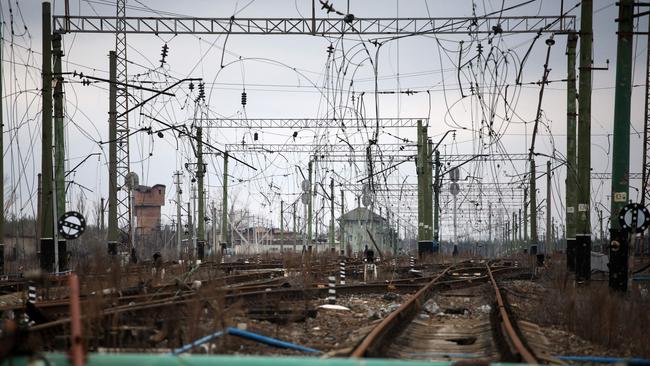
Mriya, a volunteer unit led by a member of Ukraine’s supreme court — and staffed by part-time fighters from the judiciary and law enforcement, including several other top judges — established machinegun nests atop high-rises on the periphery of Kyiv.
A member named Serhiy Tulyakov directed fire on a December night as four Russian drones passed over his rooftop position, following a highway in an effort to muffle their lawn-mower-like sound. “They’re not easy to see, especially at night, but we can hear them,” he said. “Every time we hear a similar noise, we get jolted.”
Mr. Tulyakov used thermal-vision goggles to spot the drones as his unit’s Maxim machine guns — a weapon first used in the 1880s, and a mainstay of World War I — unleashed volleys of tracer and armour-piercing rounds. One drone was shot down. Another veered off course and appeared to have crashed in the woods. Virtually all drones heading to Kyiv and other major cities no longer reach their targets, Ukrainian officials say.
The shoot-down ratio of missiles is much lower, even though Ukraine has supplemented its Soviet-vintage air defences with Iris-T and NASAMS batteries supplied by Germany and the U.S. in recent months, as it awaits the deployment of Patriots.
During the March 9 attack, Ukraine managed to intercept 34 out of 48 slower Kh-101, Kh-555 and Kalibr cruise missiles, according to its general staff. But all of Russia’s 12 faster missiles got through defences that day: six hypersonic Kh-47 Kinzhals and six supersonic Kh-22 missiles.
Direct physical damage isn’t the only danger from such attacks. Electricity grids have to maintain a precise balance of generation and consumption to keep frequency and voltage stable. Even small deviations from the European standard frequency of 50 hertz can badly damage equipment. To prevent that, power stations automatically shut down if the current becomes unstable.
Keeping frequency and voltage steady during missile attacks is “like balancing a bicycle while being kicked from the left and right,” said Mr. Kudrytskyi of the state power company.
Ukraine learned this the hard way on Nov. 23, when a huge missile barrage destroyed a number of substations and transmission lines, causing such imbalances that virtually all power plants shut down, plunging the country into darkness.
Firing up a power plant that was shut down requires another power source. Ukraine’s energy companies teamed up and used a hydro-electric plant, which was still running, to restart a coal-fired plant, followed by another, said Maksym Timchenko, chief executive of private-sector energy group DTEK. When enough power stations were online again, they restarted the nuclear plants that are the system’s mainstay.
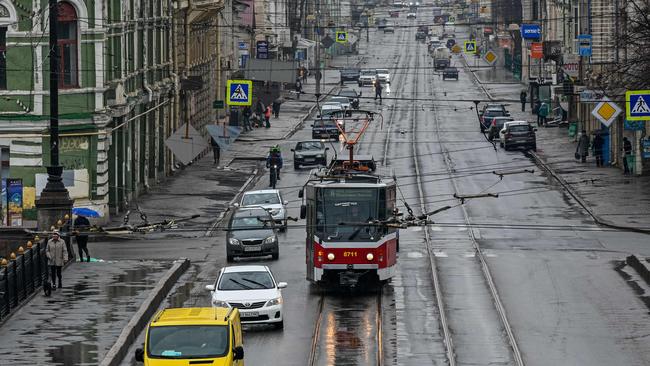
At every stage, technicians had to carefully keep the frequency at 50 Hz by balancing generation with electricity consumption in a country slowly emerging from darkness. Solving the complicated puzzle took 14 hours. But then, the power stations were working again.
Restoring lighting, heating and water supply in cities took longer. Millions endured blackouts for three days. Phone and internet networks went down, too, threatening the country’s ability to keep functioning. “The situation was critical,” said Mykhailo Fedorov, minister of digital transformation.
That week, Ukrainian officials began seriously contemplating that Russia might succeed in crippling the country. Mr. Fedorov rushed through orders of backup generators to power mobile-phone towers and internet providers. He also contacted SpaceX, securing an immediate supply of 10,000 Starlink satellite-communications stations that could create a backup network for critical government services.
Ms Kovalchuk, the restaurant-chain manager, climbed 19 flights of stairs in the dark to reach her apartment on Nov. 24. Her husband made a video on his phone as the couple tried to barbecue a steak on a small gas camping stove on their balcony. The temperature fell to just above freezing. In front of them, the city of Kyiv, usually bathed in lights, was a sea of darkness.
Her husband noted that it was thanksgiving in America, and tried to make light of the situation, joking that they were giving thanks for being alive. Ms Kovalchuk looked ready to cry.
Energy companies started preventively shutting down power to avoid grid imbalances every time there was a risk of new strikes. But cumulative damage was taking its toll.
In between the long blackouts that followed attacks, Ukrainians had to live with the rationing of energy and water. Utilities scheduled power outages for every neighbourhood, street and apartment block, posting schedules online. In some areas of Kyiv, they supplied only a couple of hours of power, water and heating a day, just enough to prevent pipes from freezing. Cities turned off street lights, some even traffic lights.
Ukrainians planned their days around the scheduled outages. Some set their alarms for the small hours when they could take a shower. Others moved in with relatives in the countryside, where they could burn firewood.
Some families still came to the Pesto Cafes Ms. Kovalchuk manages. During outages, they wore parkas, sat in candlelight and ate cold cuts from a blackout menu.
In Kyiv’s hip Podil neighbourhood, locals braved unpredictable electricity at the historic Zhovten Movie Theater. When power failed, they sat in their overcoats while the staff fired up a diesel generator.

Ukrainians quickly became experts on generators, power banks and portable power stations. These as well as blankets, candles and water canisters, once relegated to the camping section, turned into the hottest-selling items at the Epicentre mall on Kyiv’s gritty Left Bank.
Sidewalk generators allowed shops and restaurants to stay open during blackouts. Since October, Ukrainians have bought enough generators to produce a gigawatt of electricity, about the same as a nuclear reactor, according to the operations director of Epicentre’s network of malls across Ukraine.
People shared tips on how to fry eggs and warm rooms using candles, or dry wet hair in a car. They used torches to light their way on evening walks with dogs sporting LED collars.
From January, Russian missile attacks became less frequent, and their damage less severe. In February, Ukraine restored its grid sufficiently to end rolling blackouts. Kyiv turned its street lighting back on.
In all, Russia has lobbed more than 850 missiles and hundreds more drones at Ukraine’s power infrastructure, according to Ukrainian officials. The onslaught didn’t weaken people’s resolve; 87% of Ukrainians are against any territorial concessions in exchange for peace, the same per cent as in September, according to a February survey by the Kyiv International Sociology Institute.
Meanwhile, Gen. Surovikin, Russia’s “General Armageddon,” has been sidelined.
WSJ







To join the conversation, please log in. Don't have an account? Register
Join the conversation, you are commenting as Logout